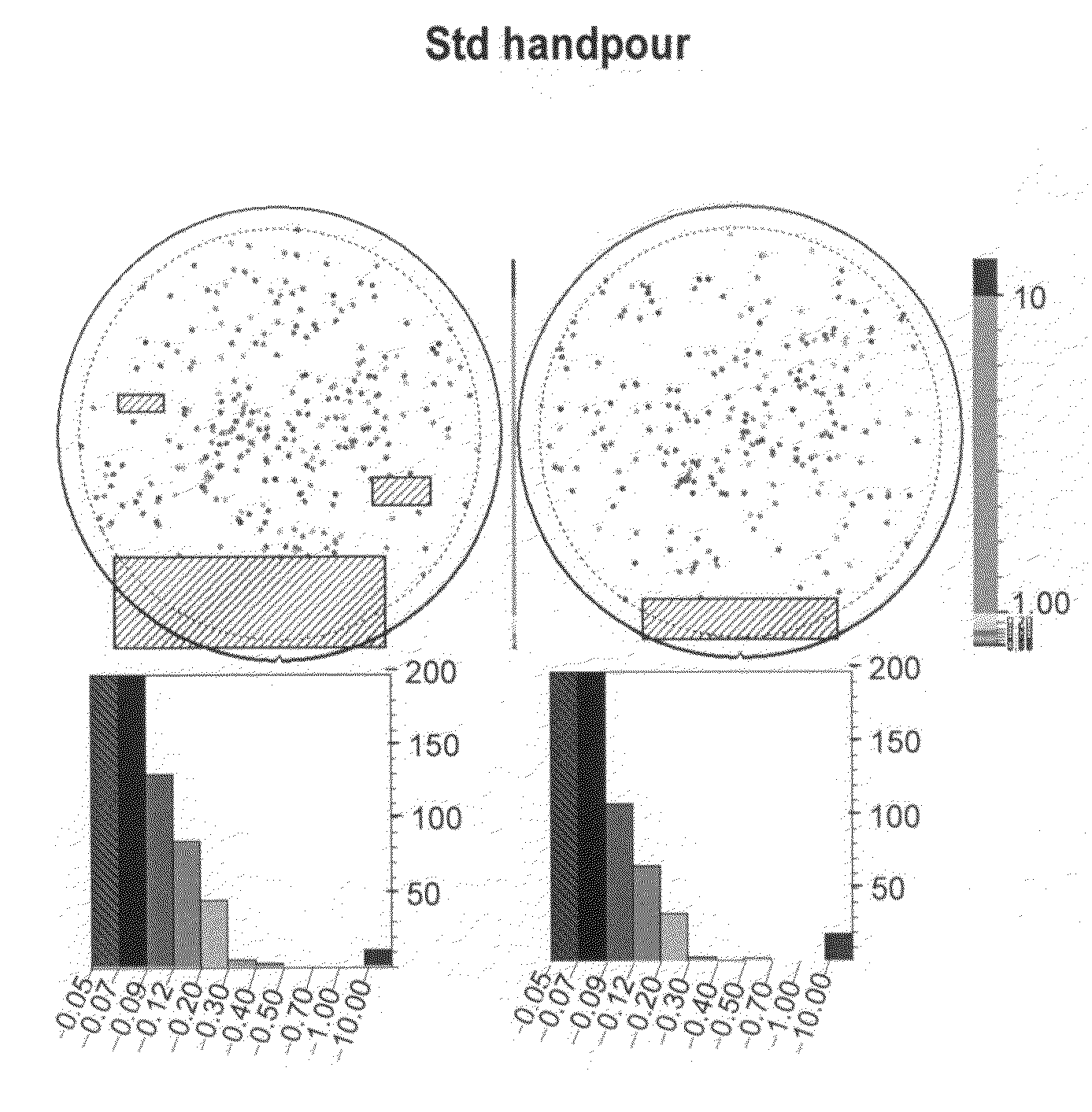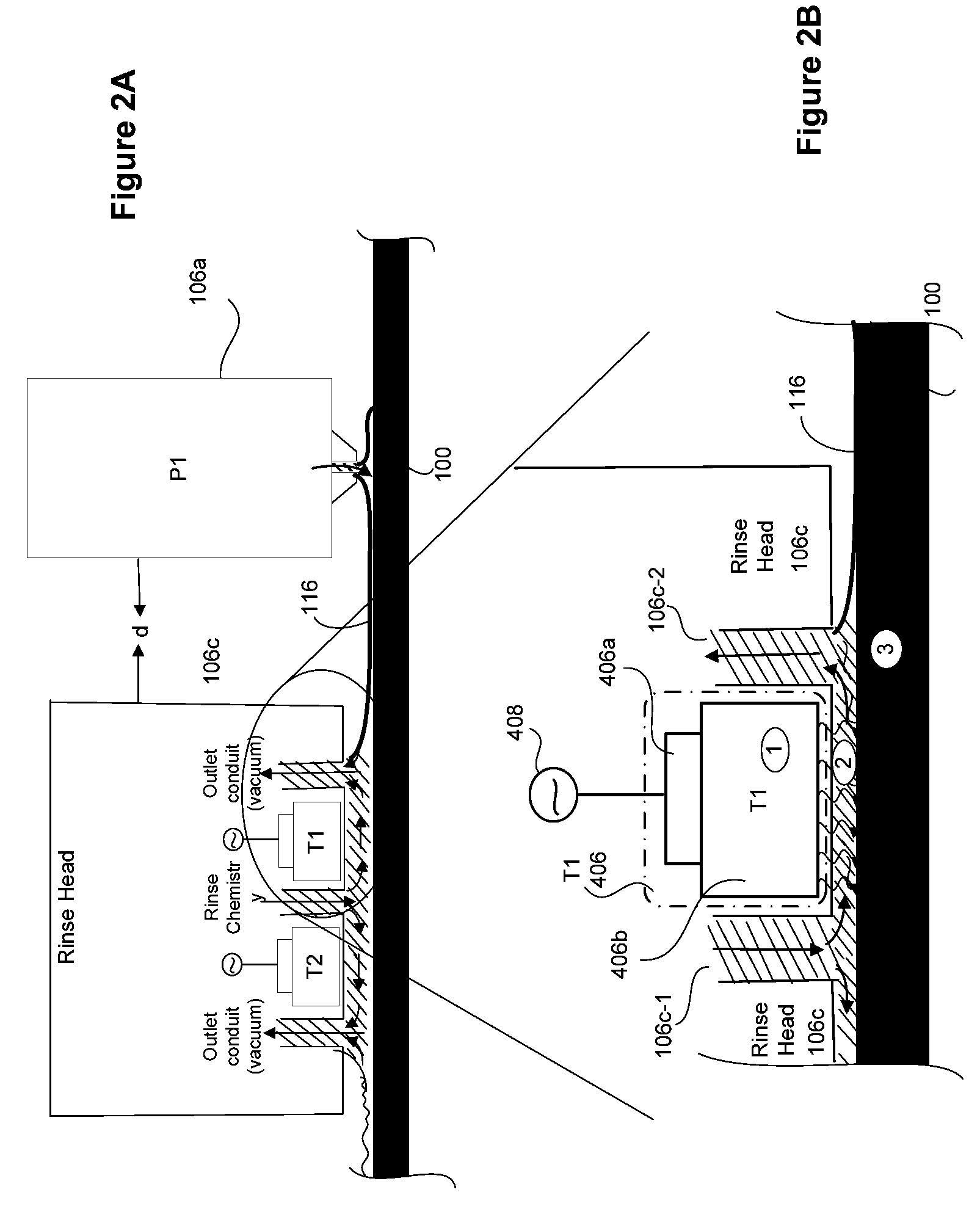Acoustic assisted single wafer wet clean for semiconductor wafer process
a technology of semiconductor wafers and wafers, applied in the direction of cleaning processes and apparatus, cleaning using liquids, cleaning processes using liquids, etc., can solve the problems of reducing the reliability and yield of the resulting device from the fabrication operation using ultrasonic cleaning, affecting the features around which the submicron particle contaminants are deposited, and affecting the cleaning effect of the substrate surface. , to achieve the effect of improving the cleaning chemistries
- Summary
- Abstract
- Description
- Claims
- Application Information
AI Technical Summary
Benefits of technology
Problems solved by technology
Method used
Image
Examples
Embodiment Construction
[0035]An invention for methods and apparatuses for cleaning and / or drying a substrate is disclosed. In the following description, numerous specific details are set forth in order to provide a thorough understanding of the present invention. It will be understood, however, by one of ordinary skill in the art, that the present invention may be practiced without some or all of these specific details. In other instances, well known process operations have not been described in detail in order not to unnecessarily obscure the present invention.
[0036]FIGS. 1A and 1B illustrate an embodiment of a substrate processing system. In this embodiment, a dip tank is used for processing a substrate. It should be appreciated that the substrate processing system illustrated in FIGS. 1A and 1B is exemplary, and that any other suitable type of configuration that would enable cleaning a substrate surface using a dip tank may be utilized. FIGS. 1A and 1B illustrate a side and a top view of a dip tank sys...
PUM
| Property | Measurement | Unit |
|---|---|---|
| Frequency | aaaaa | aaaaa |
| Temperature | aaaaa | aaaaa |
| Thickness | aaaaa | aaaaa |
Abstract
Description
Claims
Application Information
 Login to View More
Login to View More - R&D
- Intellectual Property
- Life Sciences
- Materials
- Tech Scout
- Unparalleled Data Quality
- Higher Quality Content
- 60% Fewer Hallucinations
Browse by: Latest US Patents, China's latest patents, Technical Efficacy Thesaurus, Application Domain, Technology Topic, Popular Technical Reports.
© 2025 PatSnap. All rights reserved.Legal|Privacy policy|Modern Slavery Act Transparency Statement|Sitemap|About US| Contact US: help@patsnap.com



